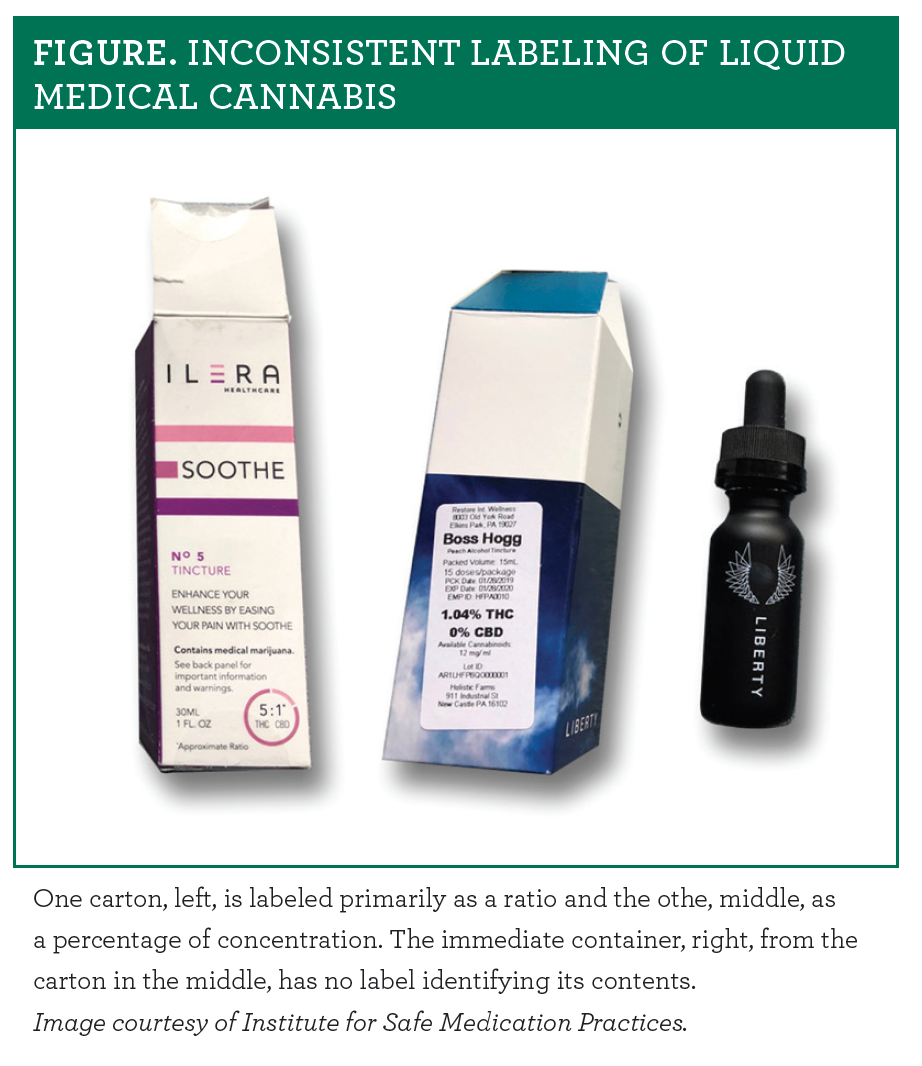Publication
Article
Pharmacy Times
Lack of Federal Regulation of Medical Cannabis Raises Risks
Author(s):
Amid differences in state programs, product labeling improvements must be adopted to protect patients.
MEDICAL CANNABIS DIFFERS FROM THE STREET PRODUCT in that the plant must be reliably grown and handled according to good manufacturing practices. This allows growers to assay and establish the products’ contents with the intent to pass along that information to dispensaries and patients.
However, lack of federal regulation has led to significant differences among state programs, yielding a wide variety of cannabis formulations, products, and strain names, and lack of consistency in state labeling requirements has given rise to practices that risk patient safety. Thus, it is difficult for dispensaries to provide patients with clearly labeled products, a critical component for reproducible and safe effects.
NONSTANDARD, CONFUSING LABELING
State laws require products to be assayed and labeled by the grower for at least the 2 major cannabinoids of interest: cannabidiol (CBD) and tetrahydrocannabinol (THC). The amounts of these chemical constituents are clinically relevant for managing patients’ symptoms, but the way these components appear on labels is not standardized and introduces the risk of errors.
The 2 primary cannabinoids are often expressed as either CBD:THC or THC:CBD. Unfortunately, no international or national standard guides which cannabinoid is listed first when presented as a ratio, and most state regulations do not dictate a formal convention. Thus, the order may differ between growers and even within a grower’s product line.
Meanwhile, some labels display the product strength as a percentage of concentration, which can make it difficult to calculate the product’s actual amount of CBD and/or THC. For example, it is difficult to identify how much CBD and/or THC is in 0.5 mL of a 0.037% product, especially if the amount is not clearly listed. Some labels provide the milligrams amount of each primary ingredient, but too often, the milligrams amount of a liquid is listed without a corresponding volume, preventing the ability to determine the concentration. Although it is critical to know the actual milligrams amount of each primary component, especially THC, which is most likely to elicit clinical and/or adverse effects, again, there is no standard.
In addition, some liquid products and most vaporization cartridges label only the outer carton, not the immediate container (bottle or cartridge) (see FIGURE). If the carton is discarded or lost, the unlabeled product may be confused with something else.

Certain dosage forms also lack important ingredient and label information. For example, tincture labels do not always include the alcohol content, and frequently the term tincture is misapplied to products that do not contain alcohol. Transdermal patches often lack key information, such as cautions about possible systemic effects, delivered dose, or onset and duration of effect.
SAFE PRACTICE RECOMMENDATIONS
Promoting patient safety requires labeling standards for medical cannabis products, at the very least to specify the CBD and THC concentrations and contents accurately and consistently, in metric units. Today’s predominantly used ratio expressions might not be the best format, given the potential for errors seen with previous use in other medications (eg, 1:10,000 for epinephrine); the format is now prohibited on most drug labels. Instead, clearly mandating the expression of concentrations and strengths of the CBD and THC contents in metric units (milligrams, grams, milligrams per milliliter) would provide the safest communication to both health care providers and patients.
All immediate product containers should be labeled, not just the outer packaging. Labels should also identify all inactive ingredients, especially additives, to help avoid use in patients with allergies to dyes and flavoring agents and mitigate potential drug-drug interactions. This information could be printed on a side panel to avoid cluttering the primary display panel.
The Institute for Safe Medication Practices (ISMP) would like to learn more about labeling and packaging problems or other practice issues with medical cannabis. Please report all close calls, errors, and hazards with medical cannabis to the ISMP National Medication Errors Reporting Program (ismp.org/report-medication-error).
Michael J. Gaunt, PharmD, is a medication safety analyst and the editor of ISMP Medication Safety Alert! Community/ Ambulatory Care newsletter at the Institute for Safe Medication Practices in Horsham, Pennsylvania.






